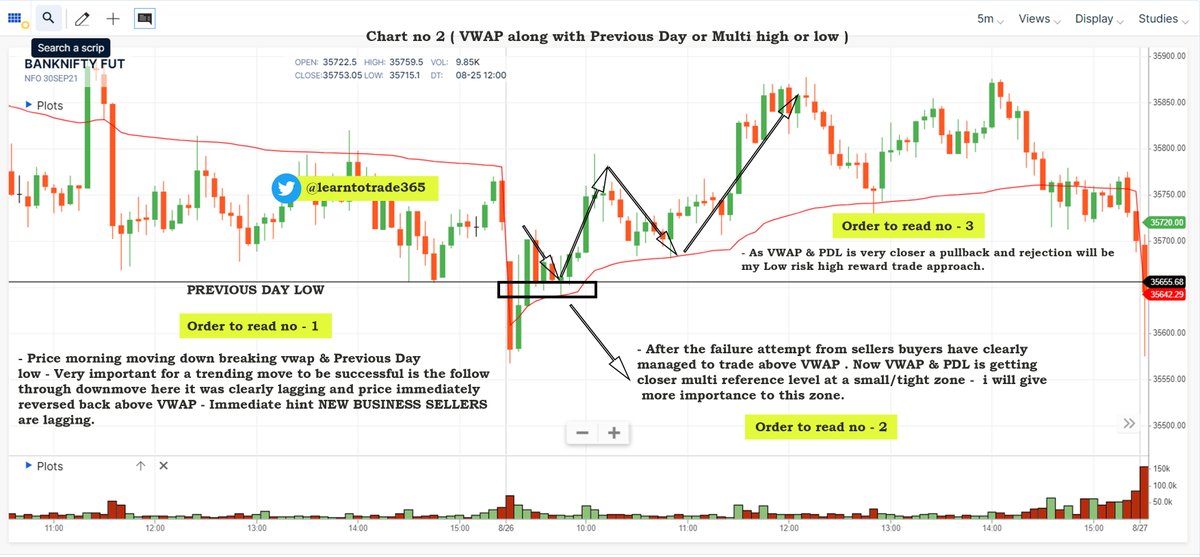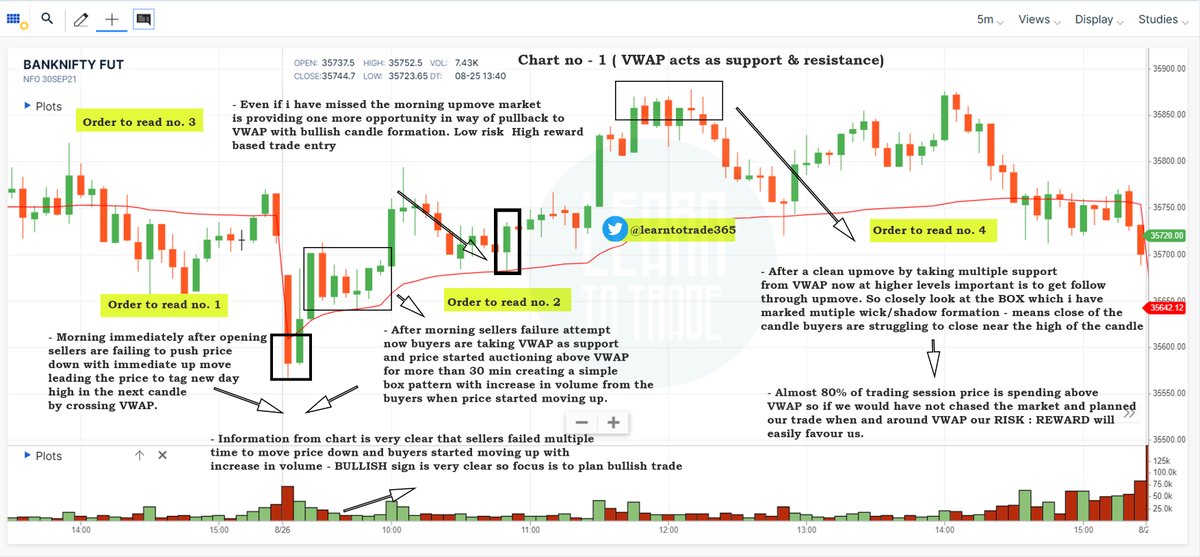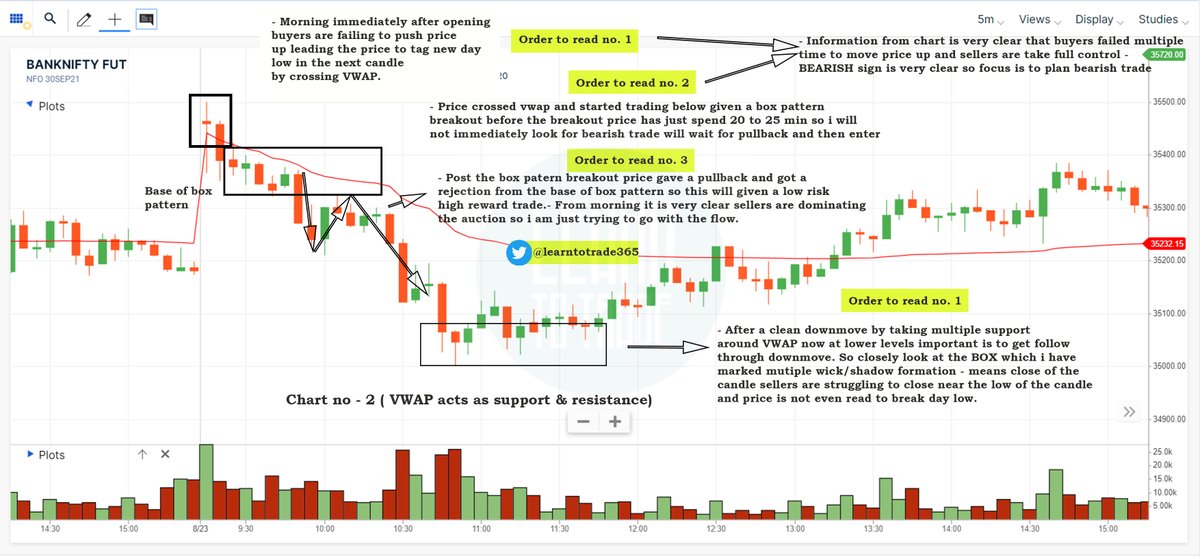
Twitter space by @bankniftydoctor
Topic - Understanding Trend and direction using RSI & ADX
Twitter Thread 🧵 of all the data points shared by Dr.Jignesh Shah during twitter space is complied
Retweet to reach wider because Learning should never stop
#StockMarketindia
1/8
Topic - Understanding Trend and direction using RSI & ADX
Twitter Thread 🧵 of all the data points shared by Dr.Jignesh Shah during twitter space is complied
Retweet to reach wider because Learning should never stop
#StockMarketindia
1/8
https://twitter.com/learntotrade365/status/1485951702415003649

2/8
RSI shows strength
RSI above 50 buyers dominating
RSI below 50 sellers dominating
RSI above 55 Long Bias
RSI below 45 Short Bias
RSI shows strength
RSI above 50 buyers dominating
RSI below 50 sellers dominating
RSI above 55 Long Bias
RSI below 45 Short Bias
3/8
Trading timeframe Daily/Hourly
Bullish Bias:
Daily RSI above 50
Hourly RSI above 55
Bearish Bias:
Daily RSI below 50
Hourly RSI below 45
For exit on Bullish entry RSI close below 45 & On Bearish entry RSI close above 55
Trading timeframe Daily/Hourly
Bullish Bias:
Daily RSI above 50
Hourly RSI above 55
Bearish Bias:
Daily RSI below 50
Hourly RSI below 45
For exit on Bullish entry RSI close below 45 & On Bearish entry RSI close above 55
4/8
To decide position
Bullish Bias:
Example 1 :If a stock has RSI 55 & other has RSI 60 - Better to choose RSI 60 stock.
Example 2 : If a stock has RSI 65 & other has RSI 70 - Better to choose RSI 70 stock
Vice versa for bearish bias
Higher the RSI more conviction
To decide position
Bullish Bias:
Example 1 :If a stock has RSI 55 & other has RSI 60 - Better to choose RSI 60 stock.
Example 2 : If a stock has RSI 65 & other has RSI 70 - Better to choose RSI 70 stock
Vice versa for bearish bias
Higher the RSI more conviction
5/8
To identify Momentum
Total 4 categories
- Mild (RSI 55 to 60) 25% position
- Moderate ( RSI 60 to 65) 50% position
- Strong (RSI 65 to 70) 75% position
- More Strong (Above 70) 100% position
Vice versa on bearish bias
To identify Momentum
Total 4 categories
- Mild (RSI 55 to 60) 25% position
- Moderate ( RSI 60 to 65) 50% position
- Strong (RSI 65 to 70) 75% position
- More Strong (Above 70) 100% position
Vice versa on bearish bias
6/8
ADX indicator has 3 lines ADX , ADX+ or DMI+ , ADX- or DMI-
Cross over example:
DMI+ is above DMI- favours long trade ( Vice versa )
Only by combining RSI & ADX
ADX indicator has 3 lines ADX , ADX+ or DMI+ , ADX- or DMI-
Cross over example:
DMI+ is above DMI- favours long trade ( Vice versa )
Only by combining RSI & ADX
7/8
RSI + ADX = Double Confirmation
More the distance/difference between DMI+ to DMI- gives better outcome.
Difference of
10 - Better
15 - Much better
More than 20 - Strong
Bigger the difference and RSI also at higher levels like above 65 more conviction
RSI + ADX = Double Confirmation
More the distance/difference between DMI+ to DMI- gives better outcome.
Difference of
10 - Better
15 - Much better
More than 20 - Strong
Bigger the difference and RSI also at higher levels like above 65 more conviction
8/8
End of the thread from twitter space by Dr.Jignesh shah.
Make sure to retweet the first tweet and make use of this learning to improve your trading style if u are using RSI & ADX indicators
End of the thread from twitter space by Dr.Jignesh shah.
Make sure to retweet the first tweet and make use of this learning to improve your trading style if u are using RSI & ADX indicators
• • •
Missing some Tweet in this thread? You can try to
force a refresh
















